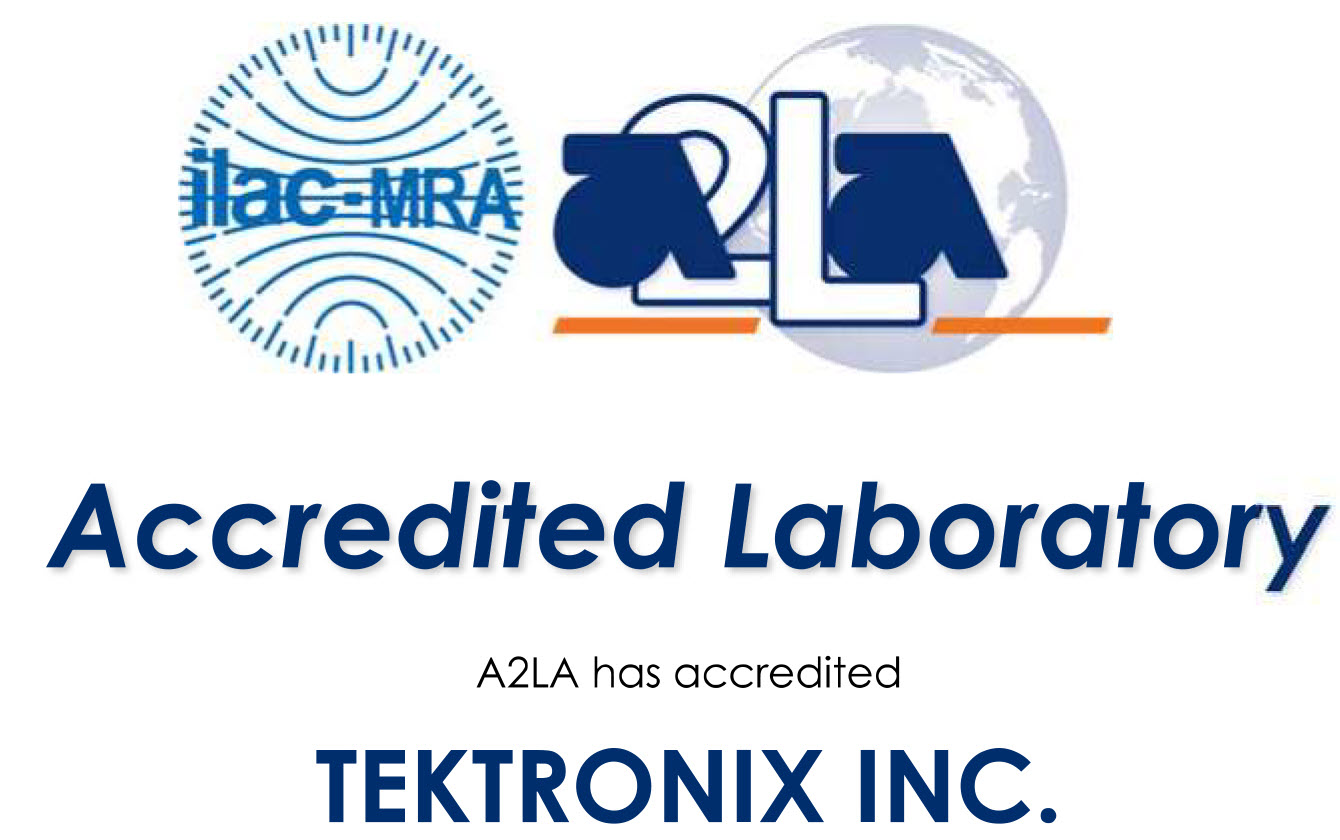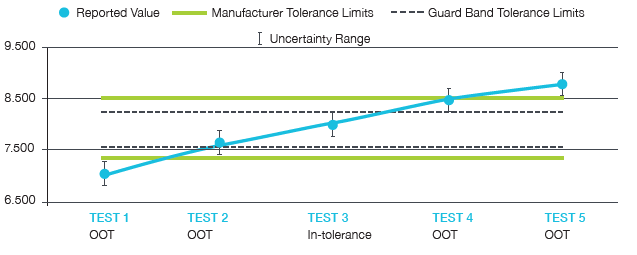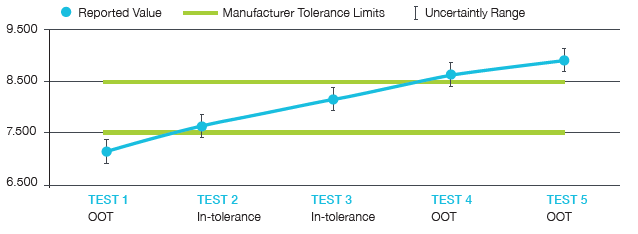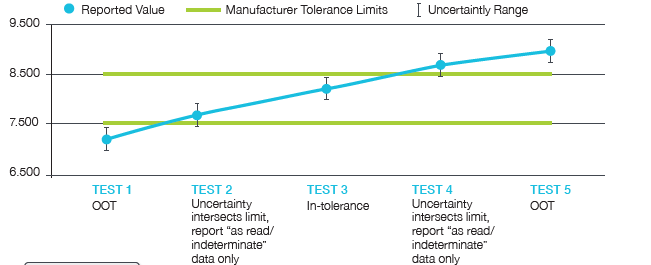

One key change since Tektronix began using the ISO/IEC 17025:2017 standard is that customers need to confirm their understanding of the decision rule we use to determine an in tolerance or out of tolerance condition when completing ISO/IEC 17025 accredited calibration.
This blog will walk you through the three decision rules that may be used.
- In/Out-of-Tolerance Determination (Default Decision Rule for Non-Tek or Keithley Equipment)
For ISO/IEC 17025 calibrations, when determining an “in-tolerance” or “out-of-tolerance” condition, the measurement uncertainty will not be taken into account when an “in-tolerance” or “out-of-tolerance” determination is made. When a measurement result for the device under test (DUT) is declared “in-tolerance”, the measured value(s) shall fall within the appropriate specification limit and the uncertainty of the measured value shall be stated and provided for customer evaluation.
EXAMPLES for “in-tolerance”, “out-of-tolerance” determination, uncertainty data provided:

- In/Out-of-Tolerance or “As Read/Indeterminate” Determination (Decision Rule for Tek and Keithley Equipment, Optional for Non-Tek or Keithley Equipment)
For ISO/IEC 17025 calibrations, when determining an “in-tolerance” or “out-of-tolerance” condition on calibrations, the measurement uncertainty shall be a consideration in that decision.
- If the measurement result and the associated uncertainty range are within the appropriate specification limit, the measured value will be declared “in-tolerance”.
- Conversely, if the measurement result and the associated uncertainty range falls outside the specification limit, the measured value will be declared “out-of-tolerance”.
- For a measurement result where any portion of the uncertainty range lies outside the specification limit, no “in-tolerance” or “out-of-tolerance” determination will be made. When no conformance determination is made, the measured value will be reported “as read/ indeterminate” with associated measurement uncertainty provided for customer evaluation.
- The device-under-test overall “as-found” and “as-left” condition will be determined on “in-tolerance” or “out-of-tolerance” determinations only.
EXAMPLES for “in-tolerance”, “out-of-tolerance” or “as read/indeterminate” determination:

- In/Out-of-Tolerance Determination with Guard Band Examples (Optional Decision Rule for Non-Tek or Keithley Equipment)
The following decision rule is used for commercial multi-brand Z540.3 (PFA=2%) calibrations and may be specified for commercial multi-brand ISO/IEC 17025 calibrations with respect to “in-tolerance” or “out-of-tolerance” determination after guard banding criteria is applied:
- If the measurement result and the associated uncertainty range are within the appropriate specification and guard band limits, the measured value will be declared “in-tolerance”.
- If the measurement result and associated uncertainty range intersects or exceeds an acceptance or guard band tolerance limit, the measured value will be declared “out-of-tolerance”.
EXAMPLES for “in-tolerance”, “out-of-tolerance” with guard band:

We understand that changing to a different decision rule may involve multiple stakeholders within your organization and could take some time. We are ready, willing and able to engage with you in this process. Acceptance of the current decision rule today does not preclude you from changing to a different decision rule later – for individual instruments, or for all of your instruments.
For more detail on these new decision rules, please download the Tektronix Decision Rule Guide here.




